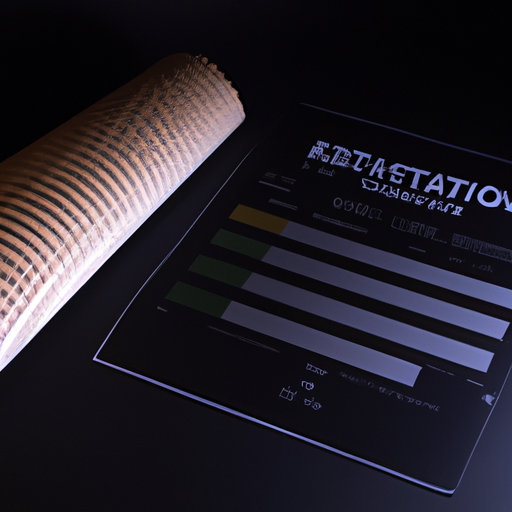
Abrasion is a common form of wear and tear that occurs on surfaces due to the rubbing or scraping of materials against each other. It can occur in various industries and applications, such as mining, construction, manufacturing, and transportation. To prevent abrasion and ensure the longevity of materials and equipment, it is essential to have a clear understanding of the abrasion resistance properties of different materials.Abrasion resistance is the ability of a material to withstand the wearing away or erosion caused by friction. It is an important property to consider when selecting materials for applications where they will be subjected to abrasive forces. Abrasion resistance is typically measured using standardized tests, such as the Taber Abrasion Test, the ASTM G65 Abrasion Test, or the ASTM D4060 Abrasion Test.The Taber Abrasion Test is a widely used test method that measures the resistance of a material to abrasive wear. In this test, a sample of the material is placed on a rotating platform, and abrasive wheels are pressed against the surface of the material. The wheels are then rotated in a circular motion, causing the abrasive material to wear away at the surface of the sample. The amount of material worn away is measured, and the abrasion resistance of the material is calculated.The ASTM G65 Abrasion Test is another commonly used test method that measures the resistance of a material to abrasive wear in a slurry environment. In this test, a sample of the material is placed in a slurry of abrasive particles, and a rotating wheel is used to apply a constant pressure to the surface of the sample. The amount of material worn away is measured, and the abrasion resistance of the material is calculated.The ASTM D4060 Abrasion Test is a test method that measures the resistance of a material to abrasive wear using a rotating abrasive wheel. In this test, a sample of the material is placed on a rotating platform, and an abrasive wheel is pressed against the surface of the sample. The wheel is then rotated in a circular motion, causing the abrasive material to wear away at the surface of the sample. The amount of material worn away is measured, and the abrasion resistance of the material is calculated.In addition to standardized test methods, there are also specific abrasion specifications that are used in various industries to ensure the quality and durability of materials. These specifications outline the requirements for abrasion resistance, including the type of test method to be used, the acceptable levels of abrasion resistance, and any additional performance criteria that must be met.For example, in the mining industry, abrasion-resistant materials are essential for equipment such as conveyor belts, crushers, and screens that are subjected to abrasive forces. The abrasion resistance of these materials is typically specified using tests such as the ASTM G65 Abrasion Test or the ASTM D4060 Abrasion Test, with minimum requirements for abrasion resistance specified in terms of wear rate or weight loss.In the construction industry, abrasion-resistant materials are used in applications such as flooring, countertops, and cladding that are exposed to high levels of wear and tear. Abrasion specifications for these materials may include requirements for hardness, impact resistance, and chemical resistance in addition to abrasion resistance.In the manufacturing industry, abrasion-resistant materials are used in components such as bearings, gears, and seals that are subjected to abrasive forces during operation. Abrasion specifications for these materials may include requirements for dimensional stability, surface finish, and fatigue resistance in addition to abrasion resistance.Overall, abrasion resistance is a critical property to consider when selecting materials for applications where they will be subjected to abrasive forces. By understanding the standardized test methods and specific abrasion specifications that are relevant to their industry, manufacturers and engineers can ensure that materials and equipment are designed to withstand the challenges of abrasive wear and maintain their performance over time.
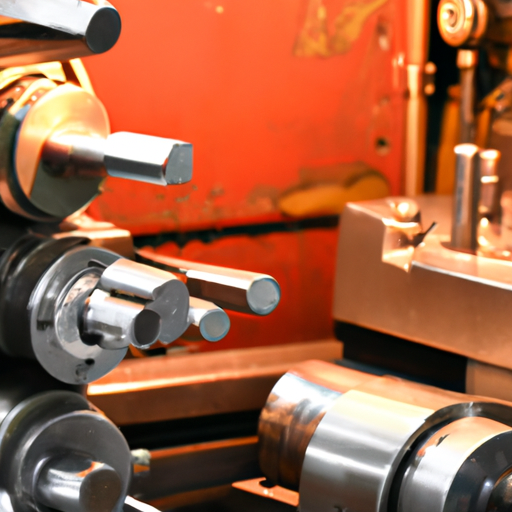
The mainstream tool production process is a complex and intricate system that involves multiple steps and stages to create high-quality tools for various industries. From the initial design phase to the final inspection and packaging, each step plays a crucial role in ensuring that the tools meet the required specifications and standards. In this article, we will explore the key stages of the mainstream tool production process and how they contribute to the overall quality and efficiency of the final product.1. Design and EngineeringThe first stage of the tool production process is the design and engineering phase. This is where the concept for the tool is developed, taking into account the specific requirements and specifications of the customer. Engineers and designers work together to create detailed drawings and plans for the tool, considering factors such as size, shape, materials, and functionality. Computer-aided design (CAD) software is often used to create 3D models of the tool, allowing for precise measurements and adjustments to be made before production begins.2. Material SelectionOnce the design is finalized, the next step is to select the appropriate materials for the tool. The choice of materials will depend on the intended use of the tool, as well as factors such as durability, strength, and cost. Common materials used in tool production include steel, aluminum, and various types of plastics. The materials are carefully inspected and tested to ensure they meet the required specifications and standards before being used in the manufacturing process.3. Machining and FabricationThe machining and fabrication stage is where the raw materials are transformed into the final shape and form of the tool. This process involves cutting, shaping, and forming the materials using a variety of tools and machines, such as lathes, milling machines, and CNC (computer numerical control) machines. Precision is key in this stage, as even the smallest error can affect the performance and quality of the tool. Skilled machinists and operators work diligently to ensure that each component is manufactured to the exact specifications outlined in the design.4. Assembly and FinishingOnce all the individual components of the tool have been machined and fabricated, they are assembled together to create the final product. This stage involves fitting the parts together, fastening them with screws or welding, and ensuring that everything is aligned and functioning properly. The tool may also undergo various finishing processes, such as polishing, painting, or coating, to improve its appearance and durability. Quality control checks are performed throughout the assembly process to identify any defects or issues that need to be addressed before the tool is completed.5. Testing and Quality AssuranceBefore the tool can be released to the customer, it must undergo rigorous testing and quality assurance procedures to ensure that it meets the required standards and specifications. This may involve testing the tool under various conditions, such as temperature, pressure, and load, to assess its performance and durability. Inspectors and quality control personnel carefully examine the tool for any defects or imperfections, making sure that it meets the strict quality standards set by the company. Any issues that are identified are addressed and corrected before the tool is approved for shipment.6. Packaging and ShippingThe final stage of the tool production process is packaging and shipping. Once the tool has passed all the necessary tests and inspections, it is carefully packaged to protect it during transit and storage. The packaging may include protective materials, such as foam or bubble wrap, as well as labels and instructions for use. The tool is then shipped to the customer, either directly or through a distributor, where it will be put to use in its intended application.In conclusion, the mainstream tool production process is a complex and multi-faceted system that involves careful planning, precision machining, rigorous testing, and quality assurance. Each stage of the process plays a crucial role in ensuring that the final product meets the required specifications and standards, providing customers with high-quality tools that are reliable and efficient. By following these key stages and procedures, tool manufacturers can produce tools that are durable, functional, and cost-effective, meeting the needs of various industries and applications.

The latest UV rubber rubbing machine is a cutting-edge piece of equipment that is revolutionizing the rubber industry. With its advanced technology and innovative features, this machine is a game-changer for rubber manufacturers looking to improve their production processes and increase efficiency.One of the key features of the latest UV rubber rubbing machine is its ability to cure rubber products using ultraviolet light. This technology allows for faster curing times and more consistent results compared to traditional methods. The UV light penetrates the rubber material, curing it from the inside out and creating a stronger, more durable product.In addition to its curing capabilities, the latest UV rubber rubbing machine also offers a range of other features that make it a valuable investment for rubber manufacturers. These include automatic temperature control, adjustable curing times, and a user-friendly interface that makes it easy to operate.The purchase price of the latest UV rubber rubbing machine varies depending on the model and specifications. On average, these machines can cost anywhere from $50,000 to $100,000 or more. While this may seem like a significant investment, the benefits of increased efficiency, improved product quality, and reduced production times make it well worth the cost for many manufacturers.In conclusion, the latest UV rubber rubbing machine is a cutting-edge piece of equipment that is revolutionizing the rubber industry. With its advanced technology and innovative features, this machine offers a range of benefits for manufacturers looking to improve their production processes and increase efficiency. While the purchase price may be high, the long-term benefits make it a worthwhile investment for those looking to stay ahead in the competitive rubber market.

Serve is a leading online marketplace that offers a wide range of products across various categories. From electronics to fashion, home goods to beauty products, Serve has something for everyone. In this article, we will explore the key product categories of Serve and why they are popular among consumers.ElectronicsOne of the most popular product categories on Serve is electronics. From smartphones to laptops, cameras to headphones, Serve offers a wide range of electronic products from top brands. Whether you are looking for the latest gadgets or upgrading your home entertainment system, Serve has you covered. With competitive prices and a user-friendly interface, shopping for electronics on Serve is a breeze.FashionAnother key product category on Serve is fashion. From clothing to accessories, shoes to handbags, Serve offers a wide selection of fashion items for men, women, and children. Whether you are looking for trendy pieces to update your wardrobe or classic staples to add to your collection, Serve has something for every style and budget. With a diverse range of brands and styles to choose from, shopping for fashion on Serve is a fun and enjoyable experience.Home GoodsServe also offers a wide range of home goods, including furniture, decor, kitchenware, and more. Whether you are looking to redecorate your home or simply add a few new pieces to freshen up your space, Serve has a variety of options to choose from. From modern to traditional, minimalist to eclectic, Serve has something for every taste and style. With affordable prices and fast shipping, shopping for home goods on Serve is convenient and hassle-free.Beauty ProductsFor those looking to pamper themselves or enhance their beauty routine, Serve offers a wide range of beauty products. From skincare to makeup, haircare to fragrances, Serve has everything you need to look and feel your best. With top brands and high-quality products, shopping for beauty products on Serve is a luxurious experience. Whether you are looking for a new lipstick shade or a nourishing face mask, Serve has a variety of options to choose from.Sports and FitnessServe also caters to sports and fitness enthusiasts with a wide range of products for active lifestyles. From workout gear to sports equipment, nutritional supplements to fitness trackers, Serve has everything you need to stay fit and healthy. Whether you are a seasoned athlete or just starting your fitness journey, Serve has a variety of products to help you reach your goals. With competitive prices and a user-friendly interface, shopping for sports and fitness products on Serve is convenient and easy.Toys and GamesFor kids and kids at heart, Serve offers a wide range of toys and games for all ages. From educational toys to board games, action figures to puzzles, Serve has something for every interest and age group. Whether you are looking for a gift for a special occasion or simply want to add to your collection, Serve has a variety of options to choose from. With fast shipping and a seamless shopping experience, shopping for toys and games on Serve is a fun and enjoyable experience.In conclusion, Serve offers a wide range of product categories to cater to the diverse needs and interests of consumers. From electronics to fashion, home goods to beauty products, sports and fitness to toys and games, Serve has something for everyone. With competitive prices, top brands, and a user-friendly interface, shopping on Serve is convenient and enjoyable. Whether you are looking to upgrade your electronics, refresh your wardrobe, redecorate your home, pamper yourself with beauty products, stay fit with sports and fitness gear, or have fun with toys and games, Serve has you covered. Start shopping on Serve today and discover the endless possibilities of online shopping.

Software products are an essential part of our daily lives, from the operating systems that power our computers to the apps on our smartphones. These products are designed to make our lives easier, more efficient, and more enjoyable. In this article, we will explore the key features of software products and how they enhance our digital experiences.1. User Interface (UI) DesignOne of the most important features of software products is the user interface design. The UI is the visual and interactive elements of the software that users interact with. A well-designed UI is intuitive, easy to navigate, and visually appealing. It should make it easy for users to find the information they need and perform tasks efficiently.Good UI design includes elements such as clear navigation menus, intuitive icons, and consistent color schemes. It should also be responsive, meaning it adapts to different screen sizes and devices. A well-designed UI can enhance the user experience and make the software more enjoyable to use.2. FunctionalityFunctionality is another key feature of software products. It refers to the features and capabilities of the software that allow users to perform specific tasks. For example, a word processing software should have features such as spell check, formatting options, and the ability to save and print documents.The functionality of a software product should be tailored to the needs of its target users. It should be easy to use and provide all the necessary tools to complete tasks efficiently. Additionally, software products should be regularly updated to add new features and improve existing ones.3. PerformancePerformance is a critical feature of software products. It refers to how well the software performs in terms of speed, responsiveness, and reliability. A well-performing software product should load quickly, respond to user inputs promptly, and not crash or freeze during use.Performance optimization is an ongoing process that involves testing, debugging, and optimizing the software code. Developers use tools such as profiling and monitoring to identify performance bottlenecks and improve the overall performance of the software.4. SecuritySecurity is a crucial feature of software products, especially in today's digital age where cyber threats are prevalent. Software products should be designed with security in mind to protect user data and prevent unauthorized access.Security features of software products include encryption, authentication, and access control. Developers should follow best practices for secure coding and regularly update the software to patch security vulnerabilities. Additionally, software products should comply with industry standards and regulations to ensure data privacy and security.5. ScalabilityScalability is another important feature of software products, especially for enterprise applications that need to handle a large number of users and data. Scalability refers to the ability of the software to handle increased workload and user traffic without compromising performance.Scalable software products should be designed with a modular architecture that allows for easy expansion and upgrades. They should also be able to scale horizontally by adding more servers or nodes to distribute the workload. Scalability is essential for ensuring that software products can grow with the needs of the business and accommodate future growth.6. CompatibilityCompatibility is a key feature of software products, especially in a world where users have multiple devices and operating systems. Software products should be compatible with a wide range of devices, browsers, and platforms to reach a larger audience.Compatibility testing is essential to ensure that the software works correctly on different devices and operating systems. Developers should consider factors such as screen size, resolution, and input methods when designing software products to ensure a consistent user experience across all devices.7. Support and DocumentationSupport and documentation are essential features of software products that help users troubleshoot issues and learn how to use the software effectively. Software products should come with comprehensive documentation that includes user guides, tutorials, and FAQs.Additionally, software products should offer customer support options such as email, phone, or live chat to assist users with technical issues. Good customer support can enhance the user experience and build trust with customers.In conclusion, software products are essential tools that enhance our digital experiences and make our lives easier. The key features of software products include user interface design, functionality, performance, security, scalability, compatibility, and support. By focusing on these features, developers can create software products that meet the needs of users and provide a seamless and enjoyable user experience.
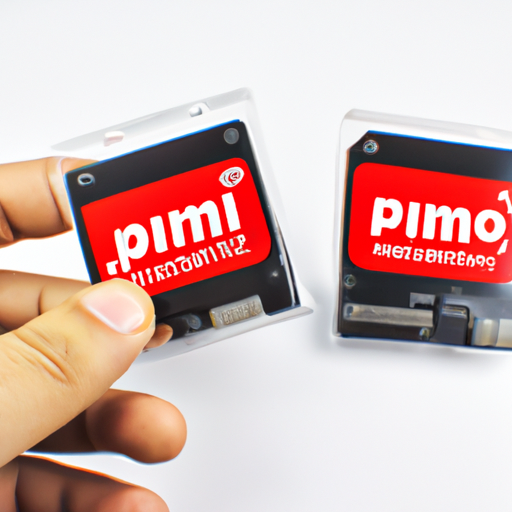
The highly anticipated release of the new Programming adapter is just around the corner, and tech enthusiasts everywhere are buzzing with excitement. This innovative device promises to revolutionize the way we interact with our electronic devices, making programming and coding more accessible and user-friendly than ever before. With its sleek design, cutting-edge technology, and user-friendly interface, the new Programming adapter is sure to be a game-changer in the world of technology.So, when can we expect to get our hands on this groundbreaking device? While an official release date has not yet been announced, industry insiders speculate that the new Programming adapter will hit the market sometime in the next few months. With its advanced features and capabilities, this device is sure to be in high demand, so tech enthusiasts are advised to keep an eye out for updates and pre-order opportunities.One of the most exciting aspects of the new Programming adapter is its versatility. Whether you're a seasoned programmer or a complete beginner, this device is designed to meet your needs and help you unleash your creativity. With its intuitive interface and user-friendly design, programming has never been easier or more accessible. From coding simple scripts to developing complex applications, the new Programming adapter is the perfect tool for anyone looking to dive into the world of programming.In addition to its user-friendly interface, the new Programming adapter also boasts a range of advanced features that set it apart from other devices on the market. With its high-speed processor and ample storage capacity, this device is capable of handling even the most demanding programming tasks with ease. Whether you're working on a small personal project or a large-scale application, the new Programming adapter has the power and performance you need to get the job done.Another key feature of the new Programming adapter is its compatibility with a wide range of devices and operating systems. Whether you prefer to work on a Windows, Mac, or Linux machine, this device is designed to seamlessly integrate with your existing setup. With its plug-and-play functionality, setting up the new Programming adapter is a breeze, allowing you to get started on your projects right away.Of course, no discussion of the new Programming adapter would be complete without mentioning its sleek and stylish design. With its slim profile and modern aesthetic, this device is sure to turn heads wherever you go. Whether you're working in a coffee shop, a co-working space, or your own home office, the new Programming adapter is the perfect blend of form and function.In conclusion, the new Programming adapter is set to be a game-changer in the world of technology. With its advanced features, user-friendly interface, and sleek design, this device is sure to appeal to tech enthusiasts of all skill levels. While an official release date has not yet been announced, industry insiders expect the new Programming adapter to hit the market in the next few months. Keep an eye out for updates and pre-order opportunities, as this device is sure to sell out fast. Get ready to take your programming skills to the next level with the new Programming adapter.

A programmer is a highly skilled individual who specializes in writing, testing, and maintaining computer programs. These individuals are responsible for creating the software that powers our everyday lives, from the operating systems on our computers and smartphones to the apps we use to communicate, shop, and entertain ourselves.Programmers come from a variety of backgrounds and have a wide range of skills and expertise. Some programmers have formal education in computer science or a related field, while others are self-taught. Regardless of their background, all programmers share a common passion for technology and problem-solving.One of the key traits of a successful programmer is their ability to think logically and analytically. Programming is essentially the process of giving instructions to a computer, and this requires breaking down complex problems into smaller, more manageable tasks. Programmers must be able to think through a problem step by step, considering all possible scenarios and outcomes.In addition to their analytical skills, programmers must also be creative. Writing code is a creative process, and programmers often need to come up with innovative solutions to complex problems. This requires thinking outside the box and being willing to experiment with different approaches until they find the best solution.Another important trait of a programmer is their attention to detail. Writing code is a meticulous process, and even a small error can have a significant impact on the functionality of a program. Programmers must be diligent in checking their work for mistakes and ensuring that their code is clean, efficient, and well-organized.Programmers also need to be persistent and patient. Debugging code can be a frustrating and time-consuming process, and it often requires a great deal of trial and error. Programmers must be willing to persevere through challenges and setbacks, and not give up until they have found a solution.Communication skills are also important for programmers, as they often work as part of a team. Programmers need to be able to effectively communicate with their colleagues, whether it's to discuss project requirements, collaborate on code, or troubleshoot issues. Clear and concise communication is essential for ensuring that everyone is on the same page and working towards a common goal.In addition to their technical skills, programmers also need to stay up-to-date on the latest trends and technologies in the field. Technology is constantly evolving, and programmers must be willing to continuously learn and adapt to new tools and techniques. This requires a commitment to lifelong learning and a willingness to invest time and effort in staying current with industry developments.Overall, a programmer is a highly skilled and dedicated individual who is passionate about technology and solving complex problems. They possess a unique combination of analytical thinking, creativity, attention to detail, persistence, and communication skills that enable them to excel in their field. Programmers play a crucial role in shaping the digital world we live in, and their contributions are essential for driving innovation and progress in the technology industry.
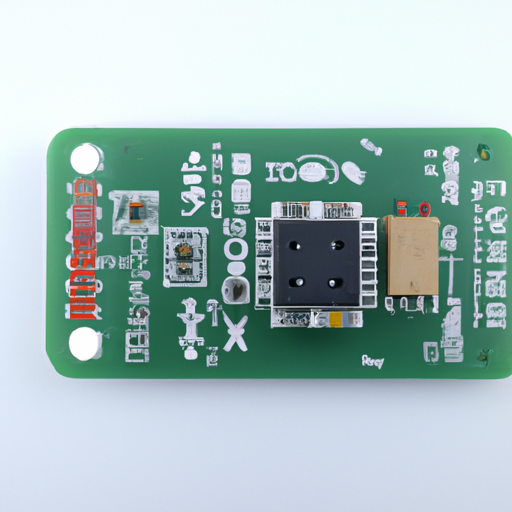
Sensor evaluation boards are essential tools for engineers and developers looking to test and evaluate the performance of various sensors. These boards provide a platform for connecting sensors to a microcontroller or computer, allowing for easy data collection and analysis. In this article, we will explore the key features of sensor evaluation boards and how they can benefit users in the development and testing of sensor-based applications.One of the primary features of sensor evaluation boards is their versatility. These boards are designed to support a wide range of sensors, including temperature, humidity, pressure, motion, and many others. This flexibility allows users to test different types of sensors without the need for multiple evaluation boards, saving time and resources. Additionally, some evaluation boards come with multiple sensor slots, allowing users to test multiple sensors simultaneously.Another important feature of sensor evaluation boards is their ease of use. These boards are typically equipped with user-friendly interfaces, such as USB or Bluetooth connectivity, making it easy to connect to a computer or microcontroller for data collection. Some boards also come with pre-installed software for data visualization and analysis, further simplifying the testing process. Additionally, many evaluation boards come with built-in calibration tools, allowing users to calibrate sensors quickly and accurately.Sensor evaluation boards also offer advanced features for more in-depth testing and analysis. For example, some boards come with programmable microcontrollers, allowing users to customize sensor settings and perform complex data processing tasks. Additionally, some boards come with built-in data logging capabilities, allowing users to record sensor data over time for further analysis. These advanced features make sensor evaluation boards a valuable tool for engineers and developers working on sensor-based projects.In addition to their technical features, sensor evaluation boards also offer practical benefits for users. For example, these boards are often compact and portable, making them easy to transport and use in different testing environments. Some boards also come with protective cases or enclosures, ensuring the safety of the board and sensors during testing. Additionally, many evaluation boards come with comprehensive documentation and technical support, helping users troubleshoot issues and get the most out of their testing experience.Overall, sensor evaluation boards are essential tools for engineers and developers looking to test and evaluate sensors for various applications. With their versatility, ease of use, advanced features, and practical benefits, these boards provide a valuable platform for sensor testing and development. Whether you are working on a simple temperature sensor project or a complex motion sensing application, a sensor evaluation board can help you achieve accurate and reliable results.

Computing amplifier assessment board, also known as CAAB, is a crucial component in the field of electronics and electrical engineering. It plays a significant role in evaluating the performance of amplifiers, which are essential in various electronic devices such as radios, televisions, and audio systems. In this article, we will delve into the details of what CAAB is, how it works, and why it is important in the field of electronics.CAAB is a specialized testing board designed to assess the performance of amplifiers. It is equipped with various features and functionalities that allow engineers and technicians to measure and analyze the key parameters of an amplifier, such as gain, bandwidth, distortion, and noise. By using CAAB, engineers can determine the efficiency and effectiveness of an amplifier, identify any potential issues or defects, and make necessary adjustments to improve its performance.One of the primary functions of CAAB is to measure the gain of an amplifier. Gain is a crucial parameter that indicates how much the output signal of an amplifier is amplified compared to the input signal. By measuring the gain, engineers can determine the amplification factor of an amplifier and ensure that it meets the required specifications for a particular application. CAAB uses specialized measurement techniques and equipment to accurately measure the gain of an amplifier and provide valuable insights into its performance.Another important parameter that CAAB assesses is the bandwidth of an amplifier. Bandwidth refers to the range of frequencies over which an amplifier can effectively amplify signals. It is essential to ensure that an amplifier has sufficient bandwidth to amplify the desired signals without distortion or loss of quality. CAAB can measure the bandwidth of an amplifier by analyzing its frequency response and identifying the upper and lower limits of its operating range. This information is crucial for engineers to optimize the performance of an amplifier and ensure that it meets the requirements of a specific application.In addition to gain and bandwidth, CAAB also evaluates other key parameters of an amplifier, such as distortion and noise. Distortion refers to any unwanted changes or alterations in the output signal of an amplifier compared to the input signal. It can occur due to various factors, such as nonlinearity in the amplifier circuit or impedance mismatch. CAAB can measure the distortion of an amplifier by analyzing its harmonic content and identifying any unwanted signals or frequencies present in the output. This information helps engineers to identify and eliminate sources of distortion in an amplifier and improve its overall performance.Noise is another critical parameter that CAAB assesses in an amplifier. Noise refers to any unwanted signals or interference that can degrade the quality of the output signal. It can be caused by various factors, such as thermal noise, electromagnetic interference, or signal coupling. CAAB can measure the noise level of an amplifier by analyzing its signal-to-noise ratio and identifying any unwanted signals or disturbances present in the output. This information is essential for engineers to minimize noise in an amplifier and ensure that it delivers high-quality signals without any interference.Overall, CAAB plays a crucial role in evaluating the performance of amplifiers and ensuring that they meet the required specifications for a particular application. By measuring key parameters such as gain, bandwidth, distortion, and noise, CAAB provides valuable insights into the efficiency and effectiveness of an amplifier. Engineers and technicians can use this information to optimize the performance of an amplifier, identify and resolve any issues or defects, and ensure that it meets the desired quality standards. In conclusion, CAAB is an essential tool in the field of electronics and electrical engineering, helping to improve the performance and reliability of amplifiers in various electronic devices.
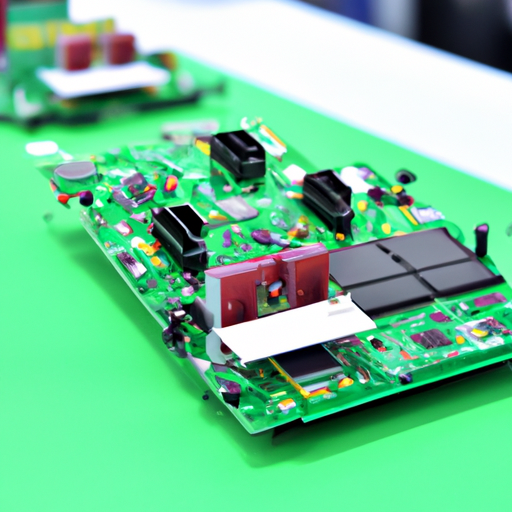
Linear voltage regulator boards are essential components in many electronic devices, providing a stable output voltage despite fluctuations in input voltage or load. The production process for these boards involves several key steps to ensure quality and reliability. In this article, we will explore the mainstream linear voltage regulator board production process in detail.1. Design and PlanningThe first step in the production process is the design and planning phase. This involves determining the specifications and requirements for the linear voltage regulator board, including the desired output voltage, current capacity, input voltage range, and other key parameters. The design team will also consider factors such as size, cost, and efficiency in developing the board layout and circuitry.Once the design is finalized, a production plan is created that outlines the materials, components, and equipment needed for manufacturing. This plan will also include a timeline for each step of the production process, from sourcing components to final assembly and testing.2. Component SourcingThe next step in the production process is sourcing the components needed to build the linear voltage regulator board. This includes electronic components such as resistors, capacitors, diodes, transistors, and the voltage regulator IC itself. These components are typically sourced from suppliers who specialize in electronic components and have a reputation for quality and reliability.In addition to electronic components, the production team will also need to source materials for the board itself, such as PCBs (printed circuit boards), solder, and other materials used in assembly. These materials must meet the specifications outlined in the design phase to ensure the board functions correctly.3. PCB FabricationOnce the components are sourced, the next step is to fabricate the PCBs that will serve as the foundation for the linear voltage regulator board. PCB fabrication involves several steps, including designing the PCB layout, printing the circuit pattern onto the board, etching away excess copper, and drilling holes for components.PCB fabrication is typically outsourced to specialized manufacturers who have the equipment and expertise to produce high-quality boards. The production team will work closely with the PCB manufacturer to ensure that the boards meet the design specifications and quality standards required for the linear voltage regulator board.4. Component AssemblyWith the PCBs fabricated, the next step is to assemble the components onto the board. This process involves placing the electronic components onto the PCB, soldering them in place, and trimming excess leads. Component assembly is a critical step in the production process, as any errors or defects in assembly can lead to malfunctions or failures in the finished board.To ensure quality and consistency in component assembly, many manufacturers use automated assembly equipment such as pick-and-place machines and reflow ovens. These machines can quickly and accurately place components onto the PCB and solder them in place, reducing the risk of errors and improving efficiency.5. Testing and Quality ControlOnce the components are assembled onto the PCB, the next step is to test the board to ensure it functions correctly. This involves applying power to the board and measuring the output voltage, current, and other key parameters to verify that they meet the design specifications. Any boards that fail testing are identified and either repaired or discarded.In addition to functional testing, the boards are also subjected to quality control checks to ensure they meet the required standards for reliability and durability. This may include visual inspection for defects, testing for thermal performance, and environmental testing to simulate real-world conditions.6. Packaging and ShippingOnce the linear voltage regulator boards have passed testing and quality control checks, the final step is to package them for shipping to customers. This may involve placing the boards in anti-static bags or trays to protect them during transit, as well as labeling them with product information and specifications.The packaged boards are then shipped to customers or distributors for use in electronic devices. Throughout the production process, manufacturers must maintain strict quality control measures to ensure that the boards meet the required standards for performance and reliability.In conclusion, the mainstream linear voltage regulator board production process involves several key steps, from design and planning to component sourcing, PCB fabrication, component assembly, testing, and quality control. By following these steps carefully and using high-quality materials and components, manufacturers can produce linear voltage regulator boards that meet the required specifications and provide reliable performance in electronic devices.

Expanding board products can offer a wide range of advantages for both businesses and consumers. From increased revenue opportunities to improved customer satisfaction, the benefits of expanding board products are numerous and can have a significant impact on a company's bottom line. In this article, we will explore some of the key advantages of expanding board products and why businesses should consider diversifying their offerings.One of the primary advantages of expanding board products is the potential for increased revenue. By offering a wider range of products, businesses can attract a larger customer base and generate more sales. This can be particularly beneficial for companies that are looking to grow and expand their operations. By diversifying their product offerings, businesses can tap into new markets and reach new customers who may not have been interested in their existing products.In addition to increased revenue opportunities, expanding board products can also help businesses to stay competitive in a rapidly changing market. By offering a diverse range of products, companies can better meet the needs and preferences of their customers. This can help to attract and retain customers, as well as differentiate a business from its competitors. In today's fast-paced business environment, it is essential for companies to adapt and evolve in order to stay ahead of the competition. Expanding board products can be a key strategy for achieving this goal.Another advantage of expanding board products is the potential for increased customer satisfaction. By offering a wider range of products, businesses can better meet the diverse needs and preferences of their customers. This can help to build customer loyalty and encourage repeat business. Customers are more likely to return to a business that offers a variety of products that meet their needs, rather than having to shop around for different items. By expanding board products, businesses can create a one-stop shop for their customers, making it easier for them to find everything they need in one place.Expanding board products can also help businesses to build brand awareness and strengthen their reputation in the market. By offering a diverse range of products, companies can showcase their expertise and innovation in their industry. This can help to position a business as a leader in their field and attract new customers who are looking for high-quality, innovative products. By expanding board products, businesses can demonstrate their commitment to meeting the needs of their customers and staying ahead of the competition.Furthermore, expanding board products can also help businesses to reduce their reliance on a single product or market. By diversifying their product offerings, companies can spread their risk and protect themselves against fluctuations in the market. This can help to ensure the long-term sustainability of a business and reduce the impact of economic downturns or other external factors. By expanding board products, businesses can create a more stable and resilient operation that is better equipped to weather any challenges that may arise.In conclusion, expanding board products can offer a wide range of advantages for businesses looking to grow and succeed in today's competitive market. From increased revenue opportunities to improved customer satisfaction, the benefits of diversifying product offerings are numerous and can have a significant impact on a company's success. By expanding board products, businesses can attract new customers, stay competitive, build brand awareness, and reduce risk. Overall, expanding board products can be a key strategy for achieving long-term growth and success in today's dynamic business environment.
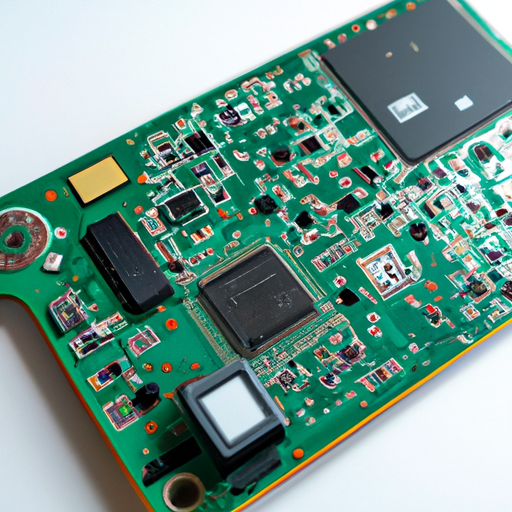
The manufacturing processes for MCU (Microcontroller Unit) evaluation boards have evolved significantly over the years to meet the increasing demands for smaller, faster, and more efficient devices. In this article, we will explore the latest manufacturing processes used in the production of MCU evaluation boards.1. Surface Mount Technology (SMT): Surface mount technology is a widely used manufacturing process for MCU evaluation boards. In this process, electronic components are mounted directly onto the surface of the PCB (Printed Circuit Board) using solder paste and a reflow oven. This process allows for smaller components to be used, resulting in a more compact and lightweight board.2. Automated Assembly: Automated assembly is another key manufacturing process for MCU evaluation boards. This process involves the use of robotic machines to place and solder components onto the PCB. Automated assembly not only speeds up the production process but also ensures greater accuracy and consistency in component placement.3. High-Density Interconnect (HDI) Technology: HDI technology is a manufacturing process that allows for the creation of complex PCB designs with high component density. This technology enables the use of multiple layers of copper traces and vias, resulting in a more compact and efficient board layout. HDI technology is particularly useful for MCU evaluation boards that require a high level of integration and functionality.4. Advanced Packaging Techniques: Advanced packaging techniques, such as System-in-Package (SiP) and Multi-Chip Modules (MCM), are increasingly being used in the production of MCU evaluation boards. These techniques involve the integration of multiple components, such as microcontrollers, memory, and sensors, into a single package. This results in a more compact and efficient board design, with improved performance and reliability.5. 3D Printing: 3D printing is a relatively new manufacturing process that is starting to be used in the production of MCU evaluation boards. 3D printing allows for the rapid prototyping and production of custom-designed PCBs, with complex shapes and features that would be difficult or impossible to achieve using traditional manufacturing methods. 3D printing is particularly useful for small-batch production runs and for creating highly customized boards for specific applications.6. Environmental Considerations: In addition to the manufacturing processes themselves, there is also a growing emphasis on environmental considerations in the production of MCU evaluation boards. Manufacturers are increasingly using lead-free solder and RoHS-compliant materials to reduce the environmental impact of their products. Additionally, efforts are being made to reduce waste and energy consumption in the manufacturing process, through the use of efficient production techniques and recycling programs.In conclusion, the manufacturing processes for MCU evaluation boards have evolved significantly in recent years, with a focus on smaller, faster, and more efficient devices. Surface mount technology, automated assembly, HDI technology, advanced packaging techniques, 3D printing, and environmental considerations are all key factors in the production of high-quality MCU evaluation boards. By staying up-to-date with the latest manufacturing processes and technologies, manufacturers can continue to meet the growing demands for advanced MCU evaluation boards in a rapidly evolving market.
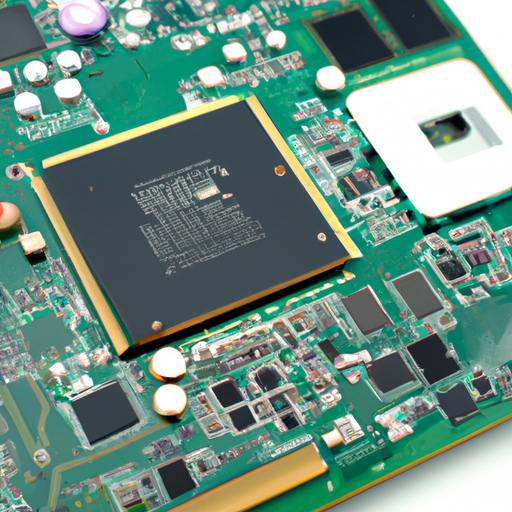
Field Programmable Gate Arrays (FPGAs) are becoming increasingly popular in the world of electronics and digital design. These versatile devices allow for the creation of custom digital circuits, making them ideal for a wide range of applications including signal processing, networking, and embedded systems. FPGA evaluation boards are essential tools for developers looking to test and prototype their designs before moving on to production.In this article, we will take a look at the top 10 FPGA evaluation board models that are popular in the mainstream market. These boards offer a range of features and capabilities, making them suitable for a variety of projects and applications.1. Xilinx Zynq-7000 ZC702 Evaluation KitThe Xilinx Zynq-7000 ZC702 Evaluation Kit is a popular choice for developers looking to evaluate the capabilities of Xilinx's Zynq-7000 family of FPGAs. This board features a Zynq-7000 SoC with a dual-core ARM Cortex-A9 processor, as well as a range of peripherals including Ethernet, USB, and HDMI interfaces.2. Altera DE1-SoC Development and Education BoardThe Altera DE1-SoC Development and Education Board is a versatile FPGA evaluation board that is ideal for both educational and development purposes. This board features an Altera Cyclone V SoC with a dual-core ARM Cortex-A9 processor, as well as a range of peripherals including Ethernet, USB, and VGA interfaces.3. Digilent Basys 3 FPGA BoardThe Digilent Basys 3 FPGA Board is a popular choice for developers looking for a low-cost, entry-level FPGA evaluation board. This board features a Xilinx Artix-7 FPGA with 33,280 logic cells, as well as a range of peripherals including USB, VGA, and PMOD interfaces.4. Terasic DE10-Nano Development KitThe Terasic DE10-Nano Development Kit is a compact and affordable FPGA evaluation board that is ideal for developers looking to prototype their designs. This board features an Intel Cyclone V SoC with a dual-core ARM Cortex-A9 processor, as well as a range of peripherals including Ethernet, USB, and HDMI interfaces.5. Avnet Ultra96-V2 Development BoardThe Avnet Ultra96-V2 Development Board is a high-performance FPGA evaluation board that is ideal for developers looking to build complex digital systems. This board features a Xilinx Zynq UltraScale+ MPSoC with a quad-core ARM Cortex-A53 processor, as well as a range of peripherals including Ethernet, USB, and HDMI interfaces.6. Lattice iCE40 UltraPlus Breakout BoardThe Lattice iCE40 UltraPlus Breakout Board is a compact and affordable FPGA evaluation board that is ideal for developers looking to build low-power digital systems. This board features a Lattice iCE40 UltraPlus FPGA with 5,280 logic cells, as well as a range of peripherals including USB and PMOD interfaces.7. Microchip PolarFire SoC Icicle KitThe Microchip PolarFire SoC Icicle Kit is a versatile FPGA evaluation board that is ideal for developers looking to evaluate the capabilities of Microchip's PolarFire SoC family of FPGAs. This board features a PolarFire SoC with a quad-core RISC-V processor, as well as a range of peripherals including Ethernet, USB, and HDMI interfaces.8. Arrow MAX1000 Development KitThe Arrow MAX1000 Development Kit is a low-cost FPGA evaluation board that is ideal for developers looking to build small-scale digital systems. This board features a Intel MAX 10 FPGA with 8,000 logic elements, as well as a range of peripherals including USB and PMOD interfaces.9. Alchitry Au FPGA Development BoardThe Alchitry Au FPGA Development Board is a compact and affordable FPGA evaluation board that is ideal for developers looking to build custom digital circuits. This board features a Xilinx Artix-7 FPGA with 15,850 logic cells, as well as a range of peripherals including USB and HDMI interfaces.10. Numato Mimas V2 FPGA Development BoardThe Numato Mimas V2 FPGA Development Board is a versatile FPGA evaluation board that is ideal for developers looking to prototype their designs. This board features a Xilinx Spartan-6 FPGA with 6,822 logic cells, as well as a range of peripherals including Ethernet, USB, and HDMI interfaces.In conclusion, FPGA evaluation boards are essential tools for developers looking to test and prototype their designs before moving on to production. The top 10 FPGA evaluation board models mentioned in this article offer a range of features and capabilities, making them suitable for a variety of projects and applications. Whether you are a beginner looking for an entry-level board or an experienced developer looking for a high-performance board, there is sure to be a FPGA evaluation board that meets your needs.

The DAC Evaluation Committee plays a crucial role in assessing the effectiveness and impact of development projects funded by the Development Assistance Committee (DAC) member countries. As the global landscape continues to evolve, the market outlook for the DAC Evaluation Committee is both challenging and promising.In recent years, there has been a growing emphasis on accountability and transparency in development assistance. Donors and stakeholders are increasingly demanding evidence-based assessments of the outcomes and impacts of their investments. This has put pressure on the DAC Evaluation Committee to enhance its evaluation methodologies and ensure that its assessments are rigorous, credible, and relevant.At the same time, the DAC Evaluation Committee is facing a number of challenges that could impact its market outlook. These include the increasing complexity of development projects, the growing demand for real-time evaluations, and the need to adapt to new technologies and data sources. In addition, the committee must also navigate political pressures and competing priorities among DAC member countries.Despite these challenges, the market outlook for the DAC Evaluation Committee remains promising. The committee has a unique position within the international development community, with a mandate to provide independent and impartial evaluations of development projects. This gives it a strong reputation for credibility and reliability, which is highly valued by donors, stakeholders, and implementing partners.Furthermore, the DAC Evaluation Committee has a track record of innovation and adaptation to changing circumstances. It has been at the forefront of developing new evaluation methodologies, such as impact evaluations and theory-based evaluations, and has embraced new technologies to enhance its data collection and analysis capabilities.In addition, the DAC Evaluation Committee has a strong network of partners and collaborators, including other evaluation bodies, research institutions, and civil society organizations. This network provides the committee with access to a wide range of expertise and resources, enabling it to stay at the cutting edge of evaluation practice.Looking ahead, the DAC Evaluation Committee will need to continue to evolve and adapt to meet the changing demands of the development assistance landscape. This will require a focus on building capacity, enhancing technical expertise, and fostering collaboration with a diverse range of stakeholders.In conclusion, the market outlook for the DAC Evaluation Committee is both challenging and promising. While the committee faces a number of obstacles, including the increasing complexity of development projects and the need to adapt to new technologies, it also has a strong reputation for credibility and reliability, as well as a track record of innovation and adaptation. By continuing to build on its strengths and address its challenges, the DAC Evaluation Committee is well positioned to remain a key player in the global evaluation landscape.

The purchase price of the latest SMPS Evaluation Committee is $500,000. This committee is responsible for evaluating and selecting the best SMPS (Switched-Mode Power Supply) products for use in various applications. The committee consists of experts in the field of power electronics and is tasked with ensuring that the selected products meet the highest standards of performance, reliability, and efficiency.The SMPS Evaluation Committee plays a crucial role in the development and advancement of power supply technology. By carefully evaluating and selecting the best products on the market, the committee helps to ensure that only the most reliable and efficient power supplies are used in a wide range of applications, from consumer electronics to industrial machinery.The purchase price of the latest SMPS Evaluation Committee reflects the importance and complexity of their work. The committee members are highly skilled professionals who bring a wealth of knowledge and experience to the table. They are responsible for evaluating a wide range of SMPS products, from basic off-the-shelf models to custom-designed solutions for specific applications.In order to carry out their work effectively, the committee requires access to state-of-the-art testing equipment and facilities. This includes oscilloscopes, power analyzers, thermal imaging cameras, and other specialized tools that are necessary for evaluating the performance and reliability of SMPS products.The purchase price of the latest SMPS Evaluation Committee also covers the cost of training and professional development for committee members. In order to stay up-to-date with the latest developments in power supply technology, committee members must attend conferences, workshops, and training sessions on a regular basis.In addition to evaluating SMPS products, the committee is also responsible for developing and maintaining industry standards for power supply performance and efficiency. This involves working closely with manufacturers, regulatory agencies, and other stakeholders to ensure that power supplies meet the highest standards of quality and safety.Overall, the purchase price of the latest SMPS Evaluation Committee reflects the importance of their work in advancing power supply technology and ensuring the reliability and efficiency of SMPS products. By carefully evaluating and selecting the best products on the market, the committee helps to drive innovation and improve the performance of power supplies in a wide range of applications.
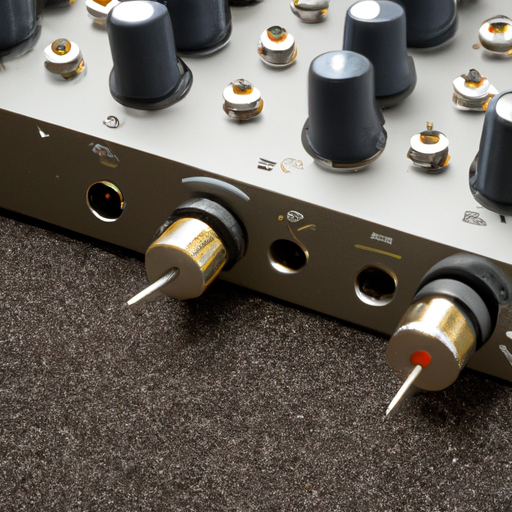
Audio amplifier boards are essential components in any audio system, as they are responsible for amplifying the audio signal and delivering it to the speakers. There are many different models of audio amplifier boards available on the market, each with its own unique features and specifications. In this article, we will explore some of the most popular models of audio amplifier boards and discuss their key characteristics.1. TPA3116D2 Audio Amplifier BoardThe TPA3116D2 audio amplifier board is a popular choice among audio enthusiasts due to its high efficiency and excellent sound quality. This board is based on the TPA3116D2 chip from Texas Instruments, which is known for its low distortion and high power output. The TPA3116D2 audio amplifier board is capable of delivering up to 50 watts per channel into a 4-ohm load, making it suitable for a wide range of audio applications.One of the key features of the TPA3116D2 audio amplifier board is its built-in protection circuitry, which helps to prevent damage to the board and connected speakers in the event of a short circuit or overheating. This board also has a compact design, making it easy to integrate into a variety of audio systems.2. PAM8403 Audio Amplifier BoardThe PAM8403 audio amplifier board is another popular choice for audio enthusiasts looking for a compact and affordable amplifier solution. This board is based on the PAM8403 chip from Diodes Incorporated, which is known for its high efficiency and low power consumption. The PAM8403 audio amplifier board is capable of delivering up to 3 watts per channel into a 4-ohm load, making it suitable for small audio systems or portable speakers.One of the key features of the PAM8403 audio amplifier board is its small size, which makes it ideal for use in compact audio systems or DIY projects. This board also has a wide input voltage range, making it compatible with a variety of power sources.3. TDA7492P Audio Amplifier BoardThe TDA7492P audio amplifier board is a popular choice for audio enthusiasts looking for a high-power amplifier solution. This board is based on the TDA7492P chip from STMicroelectronics, which is known for its high output power and low distortion. The TDA7492P audio amplifier board is capable of delivering up to 50 watts per channel into a 4-ohm load, making it suitable for a wide range of audio applications.One of the key features of the TDA7492P audio amplifier board is its built-in Bluetooth module, which allows for wireless audio streaming from compatible devices. This board also has a compact design and built-in protection circuitry, making it a versatile and reliable amplifier solution.4. LM386 Audio Amplifier BoardThe LM386 audio amplifier board is a popular choice for audio enthusiasts looking for a simple and cost-effective amplifier solution. This board is based on the LM386 chip from Texas Instruments, which is known for its low power consumption and ease of use. The LM386 audio amplifier board is capable of delivering up to 1 watt of power into an 8-ohm load, making it suitable for small audio systems or portable speakers.One of the key features of the LM386 audio amplifier board is its simplicity, as it only requires a few external components to operate. This board also has a compact design and low cost, making it an ideal choice for DIY projects or budget audio systems.5. TDA2030A Audio Amplifier BoardThe TDA2030A audio amplifier board is a popular choice for audio enthusiasts looking for a high-quality amplifier solution. This board is based on the TDA2030A chip from STMicroelectronics, which is known for its high output power and low distortion. The TDA2030A audio amplifier board is capable of delivering up to 18 watts per channel into an 8-ohm load, making it suitable for a wide range of audio applications.One of the key features of the TDA2030A audio amplifier board is its versatility, as it can be configured for stereo or bridged mono operation. This board also has a compact design and built-in protection circuitry, making it a reliable and flexible amplifier solution.In conclusion, there are many popular models of audio amplifier boards available on the market, each with its own unique features and specifications. Whether you are looking for a high-power amplifier for a home audio system or a compact amplifier for a portable speaker, there is a model to suit your needs. By carefully considering the key characteristics of each model, you can choose the best audio amplifier board for your audio system and enjoy high-quality sound reproduction.

Analog-to-digital converters (ADCs) are essential components in many electronic systems, converting analog signals into digital data for processing and analysis. ADC evaluation boards are tools used by engineers and designers to test and evaluate the performance of ADCs in real-world applications. These evaluation boards typically come with a variety of features and functionalities to help users assess the performance, accuracy, and reliability of the ADCs.There are several mainstream models of ADC evaluation boards available in the market, each offering unique features and capabilities. In this article, we will explore some of the popular ADC evaluation boards and their key specifications.1. Texas Instruments ADS1262 Evaluation ModuleThe Texas Instruments ADS1262 Evaluation Module is a high-performance ADC evaluation board designed for precision measurement applications. The board features the ADS1262, a 32-bit, 38.4 kSPS, delta-sigma ADC with integrated programmable gain amplifier (PGA) and voltage reference. The evaluation board includes a USB interface for easy connection to a PC, as well as software tools for data acquisition and analysis.Key features of the Texas Instruments ADS1262 Evaluation Module include:- 32-bit resolution
- 38.4 kSPS sampling rate
- Integrated PGA and voltage reference
- USB interface for PC connectivity
- Software tools for data acquisition and analysis2. Analog Devices AD7768 Evaluation BoardThe Analog Devices AD7768 Evaluation Board is a high-performance, 24-bit, sigma-delta ADC evaluation board designed for precision measurement applications. The board features the AD7768, a 24-bit, 256 kSPS ADC with integrated PGA and voltage reference. The evaluation board includes a USB interface for easy connection to a PC, as well as software tools for data acquisition and analysis.Key features of the Analog Devices AD7768 Evaluation Board include:- 24-bit resolution
- 256 kSPS sampling rate
- Integrated PGA and voltage reference
- USB interface for PC connectivity
- Software tools for data acquisition and analysis3. Maxim Integrated MAX11270 Evaluation KitThe Maxim Integrated MAX11270 Evaluation Kit is a high-performance, 24-bit, delta-sigma ADC evaluation board designed for precision measurement applications. The board features the MAX11270, a 24-bit, 64 kSPS ADC with integrated PGA and voltage reference. The evaluation kit includes a USB interface for easy connection to a PC, as well as software tools for data acquisition and analysis.Key features of the Maxim Integrated MAX11270 Evaluation Kit include:- 24-bit resolution
- 64 kSPS sampling rate
- Integrated PGA and voltage reference
- USB interface for PC connectivity
- Software tools for data acquisition and analysis4. Microchip MCP3428 Evaluation BoardThe Microchip MCP3428 Evaluation Board is a low-cost, high-performance, 18-bit, delta-sigma ADC evaluation board designed for precision measurement applications. The board features the MCP3428, an 18-bit, 240 SPS ADC with integrated PGA and voltage reference. The evaluation board includes a USB interface for easy connection to a PC, as well as software tools for data acquisition and analysis.Key features of the Microchip MCP3428 Evaluation Board include:- 18-bit resolution
- 240 SPS sampling rate
- Integrated PGA and voltage reference
- USB interface for PC connectivity
- Software tools for data acquisition and analysis5. NXP Semiconductors LPC4370-Xplorer Evaluation BoardThe NXP Semiconductors LPC4370-Xplorer Evaluation Board is a high-performance, 12-bit, SAR ADC evaluation board designed for precision measurement applications. The board features the LPC4370, a 12-bit, 1 MSPS ADC with integrated PGA and voltage reference. The evaluation board includes a USB interface for easy connection to a PC, as well as software tools for data acquisition and analysis.Key features of the NXP Semiconductors LPC4370-Xplorer Evaluation Board include:- 12-bit resolution
- 1 MSPS sampling rate
- Integrated PGA and voltage reference
- USB interface for PC connectivity
- Software tools for data acquisition and analysisIn conclusion, ADC evaluation boards are essential tools for engineers and designers to test and evaluate the performance of ADCs in real-world applications. The mainstream models of ADC evaluation boards discussed in this article offer a range of features and capabilities to help users assess the performance, accuracy, and reliability of ADCs. Whether you are working on precision measurement applications or high-speed data acquisition systems, there is an ADC evaluation board available to meet your needs.

When it comes to evaluating and testing analog-to-digital converters (ADCs), having the right evaluation board is crucial. ADC evaluation boards are essential tools for engineers and designers to assess the performance and functionality of ADCs before integrating them into their designs. In this article, we will explore the parameters that are important to consider when selecting a mainstream ADC evaluation board product line.1. Resolution:
Resolution is one of the most critical parameters to consider when evaluating an ADC. It refers to the number of bits that the ADC can convert, which determines the level of detail and accuracy of the conversion. Higher resolution ADCs can provide more precise measurements and better signal-to-noise ratio. Mainstream ADC evaluation boards typically offer a range of resolutions, from 8-bit to 24-bit, to cater to different application requirements.2. Sampling Rate:
Sampling rate is another important parameter to consider when evaluating an ADC. It refers to the rate at which the ADC samples the analog input signal and converts it into a digital output. The sampling rate is typically measured in samples per second (SPS) or kilosamples per second (kSPS). Higher sampling rates allow for faster and more accurate data acquisition, making them ideal for applications that require real-time processing or high-speed data acquisition.3. Input Voltage Range:
The input voltage range of an ADC evaluation board determines the maximum and minimum voltage levels that the ADC can accurately convert. It is important to select an evaluation board with an input voltage range that is compatible with the signal levels of the application. Mainstream ADC evaluation boards typically offer a wide input voltage range to accommodate a variety of input signals.4. Interface:
The interface of an ADC evaluation board is crucial for connecting the board to a host system for data transfer and control. Mainstream ADC evaluation boards typically offer a range of interfaces, such as USB, SPI, I2C, and Ethernet, to provide flexibility and compatibility with different host systems. The interface should be easy to use and integrate into the existing design, allowing for seamless communication between the ADC and the host system.5. Power Consumption:
Power consumption is an important consideration when selecting an ADC evaluation board, especially for portable or battery-powered applications. Mainstream ADC evaluation boards typically offer low power consumption options to minimize energy usage and extend battery life. It is important to select an evaluation board with the appropriate power consumption levels for the application to ensure optimal performance and efficiency.6. Software Support:
Software support is essential for configuring, controlling, and analyzing the data from an ADC evaluation board. Mainstream ADC evaluation boards typically come with software tools and drivers that allow for easy setup and operation. The software should be user-friendly, intuitive, and provide advanced features for data analysis and visualization. It is important to select an evaluation board with robust software support to streamline the evaluation process and maximize productivity.7. Price:
Price is always a consideration when selecting an ADC evaluation board, especially for budget-conscious engineers and designers. Mainstream ADC evaluation boards typically offer a range of price points to cater to different budgets and requirements. It is important to consider the overall value and features of the evaluation board when evaluating the price to ensure that it meets the needs of the application without compromising on performance or functionality.In conclusion, selecting the right mainstream ADC evaluation board product line requires careful consideration of various parameters, including resolution, sampling rate, input voltage range, interface, power consumption, software support, and price. By evaluating these parameters and choosing a board that meets the specific requirements of the application, engineers and designers can ensure accurate and reliable performance of the ADC in their designs.

The latest Assessment kit, known as the Assessment Kit 2021, is priced at $299. This kit is designed to provide educators and administrators with a comprehensive set of tools and resources to assess student learning and progress. In this article, we will explore the features and benefits of the Assessment Kit 2021, as well as its potential impact on teaching and learning.The Assessment Kit 2021 includes a variety of assessment tools, such as standardized tests, rubrics, and performance tasks. These tools are designed to help educators measure student achievement in a variety of subject areas, including math, reading, and science. The kit also includes resources for analyzing assessment data and using it to inform instruction and intervention strategies.One of the key features of the Assessment Kit 2021 is its focus on formative assessment. Formative assessment is an ongoing process of gathering and analyzing information about student learning in order to make informed instructional decisions. The kit includes tools and resources for implementing formative assessment practices in the classroom, such as checklists, observation guides, and self-assessment tools.Another important feature of the Assessment Kit 2021 is its emphasis on personalized learning. Personalized learning is an approach to instruction that tailors teaching and learning to the individual needs and interests of each student. The kit includes resources for creating personalized learning plans, setting goals, and tracking progress over time.In addition to assessment tools and resources, the Assessment Kit 2021 also includes professional development materials for educators. These materials are designed to help teachers and administrators deepen their understanding of assessment practices and improve their ability to use assessment data to drive instruction. The kit also includes resources for collaborating with colleagues and parents to support student learning.Overall, the Assessment Kit 2021 is a comprehensive and user-friendly resource for educators who are looking to improve their assessment practices and enhance student learning. By providing a wide range of assessment tools and resources, as well as professional development materials, the kit has the potential to have a significant impact on teaching and learning in schools.In conclusion, the Assessment Kit 2021 is a valuable resource for educators who are looking to enhance their assessment practices and improve student learning. Priced at $299, this kit includes a variety of assessment tools, resources, and professional development materials that can help educators measure student achievement, implement formative assessment practices, and personalize instruction. By using the Assessment Kit 2021, educators can gain valuable insights into student learning and make informed instructional decisions that support academic growth and success.
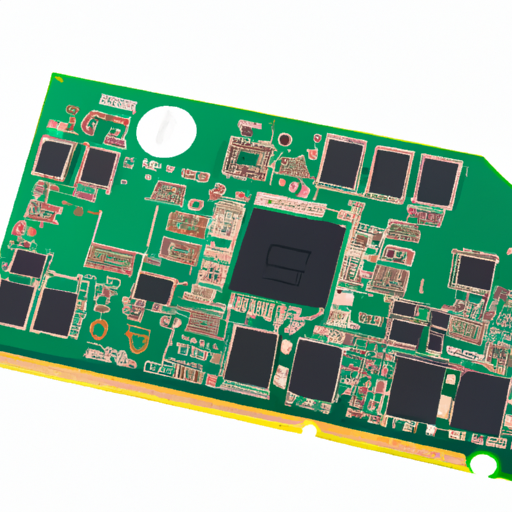
Hot spot development boards are essential tools for creating and testing new technologies, applications, and devices. These boards come with a variety of accessories that enhance their functionality and make them even more versatile. In this article, we will explore the different accessories available for hot spot development boards and their prices.One of the most common accessories for hot spot development boards is the power supply. These boards require a stable power source to function properly, and having a reliable power supply is crucial for their performance. The price of a power supply for hot spot development boards can range from $10 to $50, depending on the brand and specifications.Another essential accessory for hot spot development boards is the USB cable. This cable is used to connect the board to a computer for programming and debugging purposes. The price of a USB cable for hot spot development boards is typically around $5 to $10.In addition to power supplies and USB cables, hot spot development boards also require various connectors and adapters to connect to other devices and peripherals. These accessories can include HDMI cables, Ethernet cables, and GPIO headers. The prices of these accessories vary depending on the type and brand, but they typically range from $5 to $20.One of the most popular accessories for hot spot development boards is the case or enclosure. These cases provide protection for the board and its components, as well as a more professional look. The price of a case for hot spot development boards can range from $10 to $30, depending on the material and design.Other accessories for hot spot development boards include sensors, actuators, and expansion boards. These accessories allow developers to add new functionalities to their projects and experiment with different technologies. The prices of these accessories vary depending on the type and brand, but they typically range from $10 to $50.Overall, the price of accessories for hot spot development boards can vary depending on the type, brand, and specifications. However, investing in high-quality accessories is essential to ensure the proper functioning and performance of the board. By choosing the right accessories, developers can enhance the capabilities of their hot spot development boards and create innovative projects and applications.

The evaluation board industry is constantly evolving to meet the demands of the rapidly changing technology landscape. As new technologies emerge and existing ones continue to advance, evaluation boards play a crucial role in helping engineers and designers test and evaluate the performance of various components and systems. In this article, we will explore some of the key trends shaping the evaluation board industry today.1. Increased demand for high-performance evaluation boardsOne of the most significant trends in the evaluation board industry is the growing demand for high-performance boards that can support the latest technologies. As the complexity of electronic systems continues to increase, engineers and designers require evaluation boards that can handle higher speeds, greater bandwidth, and more advanced features. This has led to the development of evaluation boards with improved signal integrity, lower noise levels, and enhanced power management capabilities.2. Integration of multiple functions on a single boardAnother trend in the evaluation board industry is the integration of multiple functions on a single board. As the size and complexity of electronic systems continue to grow, there is a need for evaluation boards that can support multiple components and functions in a compact form factor. This trend has led to the development of evaluation boards that combine functions such as analog-to-digital conversion, digital signal processing, and power management on a single board, making it easier for engineers to test and evaluate complex systems.3. Emphasis on ease of use and flexibilityEase of use and flexibility are also key trends in the evaluation board industry. Engineers and designers require evaluation boards that are easy to set up and use, with intuitive interfaces and clear documentation. Additionally, flexibility is important as it allows engineers to customize the board to meet their specific testing requirements. This trend has led to the development of evaluation boards with user-friendly software interfaces, modular designs, and support for a wide range of peripherals and accessories.4. Growing focus on power efficiency and sustainabilityWith increasing concerns about energy consumption and environmental impact, there is a growing focus on power efficiency and sustainability in the evaluation board industry. Engineers and designers are looking for evaluation boards that consume less power, generate less heat, and are designed with environmentally friendly materials. This trend has led to the development of evaluation boards with advanced power management features, energy-efficient components, and recyclable materials.5. Adoption of advanced technologies such as artificial intelligence and machine learningAs artificial intelligence (AI) and machine learning (ML) continue to gain traction across various industries, there is a growing demand for evaluation boards that can support these advanced technologies. Engineers and designers are looking for evaluation boards with the processing power, memory capacity, and connectivity options needed to develop and test AI and ML algorithms. This trend has led to the development of evaluation boards with high-performance processors, dedicated AI accelerators, and support for neural network frameworks.In conclusion, the evaluation board industry is experiencing rapid growth and innovation as it adapts to the evolving needs of engineers and designers. With increasing demand for high-performance boards, integration of multiple functions, emphasis on ease of use and flexibility, focus on power efficiency and sustainability, and adoption of advanced technologies such as AI and ML, the future of the evaluation board industry looks promising. By staying abreast of these trends and continuing to innovate, evaluation board manufacturers can continue to meet the needs of their customers and drive the development of cutting-edge electronic systems.

The highly anticipated release of the new Tape allocation is just around the corner, and fans of the popular music streaming service are eagerly awaiting the announcement. With rumors swirling about potential changes to the allocation system, there is a sense of excitement and anticipation in the air.For those unfamiliar with the Tape allocation system, it is a unique feature of the music streaming service that allows users to access a limited number of tapes each month. These tapes can be used to listen to albums, playlists, and other content on the platform. The allocation system has been a key feature of the service since its inception, and users have come to rely on it as a way to discover new music and curate their listening experience.The upcoming release of the new Tape allocation has been shrouded in secrecy, with the company remaining tight-lipped about any potential changes or updates. However, industry insiders and analysts have been speculating about what the new allocation system might entail, and there are several key areas of interest that are generating buzz among fans.One of the most hotly debated topics is whether the new Tape allocation will be more or less generous than the current system. Some users have expressed frustration with the current allocation limits, feeling that they are too restrictive and limit their ability to explore new music. Others, however, appreciate the limits as a way to encourage more thoughtful and intentional listening habits.Another area of interest is whether the new allocation system will be more personalized and tailored to individual user preferences. With advances in machine learning and artificial intelligence, there is the potential for the service to better understand each user's tastes and preferences, and to recommend tapes that are more likely to resonate with them. This could lead to a more personalized and engaging listening experience for users.Additionally, there is speculation about whether the new Tape allocation will include new features or enhancements that will further enhance the user experience. Some users have expressed a desire for more social features, such as the ability to share tapes with friends or collaborate on playlists. Others are hoping for improved discovery tools that will help them find new music that aligns with their tastes.Overall, the upcoming release of the new Tape allocation is generating a great deal of excitement and anticipation among fans of the music streaming service. With potential changes to the allocation system on the horizon, users are eagerly awaiting the announcement to see what new features and enhancements will be included. Stay tuned for more updates as the release date approaches!

When it comes to training employees on film products, there are several key considerations that need to be taken into account in order to ensure that the training is effective and successful. From understanding the product itself to knowing how to effectively communicate its features and benefits to customers, there are a number of important factors that must be considered in order to provide comprehensive and valuable training to employees.One of the first considerations when it comes to training employees on film products is ensuring that they have a thorough understanding of the products themselves. This includes not only knowing the technical specifications of the products, but also understanding how they work, what sets them apart from competitors, and how they can benefit customers. Employees should be familiar with the different types of film products available, as well as their uses and applications in various industries.In addition to understanding the products themselves, employees should also be trained on how to effectively communicate the features and benefits of the products to customers. This includes being able to articulate the value proposition of the products, as well as being able to address any potential objections or concerns that customers may have. Training should focus on helping employees develop strong communication skills, as well as providing them with the knowledge and tools they need to effectively sell the products to customers.Another important consideration when it comes to training employees on film products is ensuring that they have the necessary technical skills to effectively use and demonstrate the products. This may include training on how to properly handle and store the products, as well as how to operate any equipment or machinery that may be required to use the products. Employees should also be trained on how to troubleshoot common issues that may arise with the products, as well as how to provide basic maintenance and support to customers.In addition to technical skills, employees should also be trained on how to effectively market and promote the film products to customers. This may include training on how to create compelling marketing materials, as well as how to effectively use social media and other digital marketing channels to reach potential customers. Employees should also be trained on how to identify and target key customer segments, as well as how to tailor their sales pitches to meet the specific needs and preferences of different customers.Finally, it is important to consider the ongoing training and development needs of employees when it comes to film products. This may include providing regular refresher training on new products or features, as well as offering opportunities for employees to further develop their skills and knowledge through additional training or certification programs. By investing in the ongoing training and development of employees, companies can ensure that their employees are well-equipped to effectively sell and promote film products to customers.In conclusion, training employees on film products requires a comprehensive and strategic approach that takes into account a number of key considerations. From understanding the products themselves to developing strong communication and technical skills, there are a number of important factors that must be considered in order to provide effective and valuable training to employees. By investing in the training and development of employees, companies can ensure that their employees are well-equipped to effectively sell and promote film products to customers, ultimately driving sales and success for the business.

Choosing the right spot for a 2D material is a crucial decision that can greatly impact the performance and functionality of the material in various applications. With the rapid advancement of 2D materials in recent years, there are now a wide range of options available, each with its own unique properties and characteristics. In this article, we will discuss some key factors to consider when choosing the spot for a 2D material.1. Material properties: The first step in choosing the right spot for a 2D material is to consider the material properties. Different 2D materials have different properties, such as electrical conductivity, thermal conductivity, mechanical strength, and optical properties. Depending on the specific application, you will need to choose a material that has the right combination of properties to meet your requirements.2. Application requirements: It is important to consider the specific requirements of the application when choosing a spot for a 2D material. For example, if you are looking for a material for use in electronics, you will need a material with high electrical conductivity. If you are looking for a material for use in sensors, you will need a material with high sensitivity. By understanding the requirements of the application, you can narrow down your options and choose the best spot for the material.3. Compatibility with other materials: When choosing a spot for a 2D material, it is important to consider the compatibility of the material with other materials that will be used in the application. For example, if the 2D material will be used in a composite material, you will need to ensure that it is compatible with the other materials in the composite. Compatibility with other materials can impact the performance and durability of the final product, so it is important to consider this factor when choosing a spot for the material.4. Cost: Cost is another important factor to consider when choosing a spot for a 2D material. Some 2D materials are more expensive than others, so it is important to consider the cost of the material in relation to the budget for the application. It is also important to consider the cost of processing and manufacturing the material, as this can impact the overall cost of the final product.5. Availability: Availability is another important factor to consider when choosing a spot for a 2D material. Some 2D materials are more readily available than others, so it is important to consider the availability of the material in relation to the timeline for the application. If the material is not readily available, it may cause delays in the development of the application, so it is important to consider this factor when choosing a spot for the material.In conclusion, choosing the right spot for a 2D material is a critical decision that can greatly impact the performance and functionality of the material in various applications. By considering the material properties, application requirements, compatibility with other materials, cost, and availability, you can make an informed decision and choose the best spot for the material.

2D materials have gained significant attention in recent years due to their unique properties and potential applications in various industries. These materials, which are only one or two atoms thick, exhibit exceptional mechanical, electrical, and optical properties that make them highly desirable for a wide range of applications. In this article, we will explore the key product categories of 2D materials and their potential impact on the future of technology.1. ElectronicsOne of the most promising applications of 2D materials is in the field of electronics. Graphene, the first 2D material to be isolated, has been extensively studied for its exceptional electrical conductivity and transparency. It is considered a potential replacement for silicon in electronic devices due to its high electron mobility and thermal conductivity. Other 2D materials, such as transition metal dichalcogenides (TMDs) and black phosphorus, also show promise for use in transistors, sensors, and other electronic components.2. Energy storage2D materials have also shown great potential for use in energy storage devices, such as batteries and supercapacitors. Graphene, for example, has been used to improve the performance of lithium-ion batteries by increasing their energy density and cycle life. Other 2D materials, such as MXenes and phosphorene, have also been studied for their ability to store and release energy efficiently. These materials could help to address the growing demand for high-performance energy storage solutions in a wide range of applications, from consumer electronics to electric vehicles.3. OptoelectronicsThe unique optical properties of 2D materials make them ideal candidates for use in optoelectronic devices, such as light-emitting diodes (LEDs) and photodetectors. TMDs, for example, have been shown to exhibit strong light-matter interactions, making them suitable for use in photonic devices. Graphene, on the other hand, has been used to enhance the performance of LEDs and photodetectors due to its high transparency and conductivity. These materials could revolutionize the field of optoelectronics by enabling the development of faster, more efficient devices with improved performance.4. Sensing and detection2D materials have also shown great potential for use in sensing and detection applications. Graphene, for example, has been used to develop highly sensitive gas sensors that can detect trace amounts of various gases. Other 2D materials, such as molybdenum disulfide (MoS2) and boron nitride, have also been studied for their ability to detect specific molecules and ions. These materials could be used in a wide range of applications, from environmental monitoring to medical diagnostics, to improve the accuracy and sensitivity of sensing devices.5. Coatings and composites2D materials have also been explored for their potential use in coatings and composites to improve the mechanical, thermal, and electrical properties of materials. Graphene, for example, has been used to enhance the strength and conductivity of polymers, metals, and ceramics. Other 2D materials, such as hexagonal boron nitride (h-BN) and tungsten disulfide (WS2), have also been studied for their ability to improve the performance of materials in harsh environments. These materials could be used to develop advanced coatings and composites for a wide range of applications, from aerospace to automotive industries.In conclusion, 2D materials have the potential to revolutionize various industries by enabling the development of advanced products with superior performance and functionality. From electronics and energy storage to optoelectronics and sensing, these materials offer a wide range of opportunities for innovation and growth. As researchers continue to explore the properties and applications of 2D materials, we can expect to see even more exciting developments in the future.